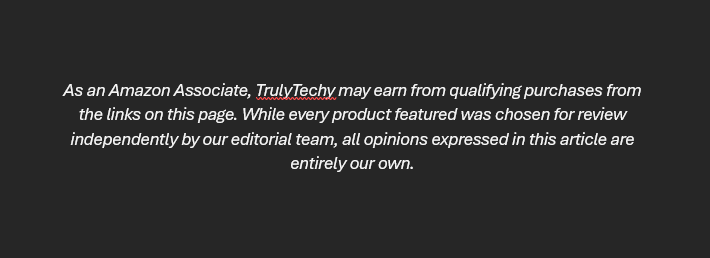Key Takeaways:
- Handheld inkjet printers offer versatile printing solutions across various surfaces.
- These portable devices are ideal for industries needing quick, on-the-go marking.
- Understanding the types and uses of handheld printers can help you select the right one for your needs.
Introduction to Handheld Inkjet Printers
Handheld inkjet printers are revolutionizing the way we think about printing. Portable handheld inkjet printers are not just for paper anymore; they can print on a variety of surfaces including metal, glass, plastic, and even concrete.
Their versatility and efficiency for various coding applications make them ideal for labeling and coding tasks.
Whether you’re in a warehouse, a retail store, or out in the field, a handheld printer can assist you in marking and coding with ease.
Imagine you’re in a busy warehouse and you need to label a stack of cardboard boxes quickly.
Instead of hauling them to a stationary printer, you can simply use a handheld inkjet printer to get the job done on the spot.
This flexibility is what makes these devices so valuable in today’s fast-paced world.
How Do Handheld Inkjet Printers Work?
Handheld inkjet printers operate similarly to traditional inkjet printers but with added portability. They use ink cartridges to spray ink onto surfaces, creating text, barcodes, logos, and other markings.
The ink dries quickly, ensuring that your printed information is clear and legible.
Some models have the capability to print up to four separate lines in a single pass, highlighting their efficiency and versatility for various applications.
These printers are designed to be user-friendly. Most models come with a digital interface that allows you to select the type of print you need.
Whether it’s a barcode for inventory management or a logo for branding, you can easily switch between different printing modes.
Types of Handheld Inkjet Printers
There are several types of handheld inkjet printers available, each designed to meet specific needs. Some are optimized for printing on porous surfaces like paper and cardboard, while others are better suited for non-porous surfaces like metal and glass.
For example, if you need to print on plastic or foil, you'll want a printer that uses specialized ink cartridges designed for those materials.
On the other hand, if you're working with lumber or concrete, you'll need a more robust model that can handle the rough texture of these surfaces.
Key Features to Look For
When selecting a handheld inkjet printer, there are several key features to consider. First, look at the print resolution. Higher resolution means clearer, more detailed prints.
Next, consider the ink cartridge capacity. Larger cartridges mean fewer interruptions for refills.
Another important feature is the printer's battery life. Having a longer battery life means you can complete your tasks without the hassle of frequent recharging.
Finally, check if the printer supports wireless connectivity. This can make it easier to send print jobs from your computer or mobile device.
Applications in Various Industries
Handheld inkjet printers are used in a wide range of industries.
In retail, they are perfect for printing price tags, promotions, and barcodes.
In manufacturing, they are used for coding and marking parts and products.
In the construction industry, these printers are invaluable for marking lumber, concrete, and other building materials.
They are also used in the food and beverage industry for printing expiration dates and batch numbers on packaging.
Benefits of Using Handheld Inkjet Printers
One of the biggest benefits of handheld inkjet printers is their portability. You can take them anywhere, making them ideal for on-the-go printing needs.
They are also incredibly versatile and capable of printing on a wide variety of surfaces.
Another advantage is their ease of use. With intuitive interfaces and straightforward operation, even those who are not tech-savvy can use these printers effectively.
Plus, they offer quick drying times, ensuring that your prints are smudge-free.
Common Challenges and Solutions
While handheld inkjet printers offer many benefits, they are not without their challenges. One common issue is ink smudging, especially on non-porous surfaces.
To combat this, manufacturers have developed quick-drying inks that reduce the risk of smudging.
Another challenge is maintaining print quality over time. Regular maintenance, such as cleaning the print head and replacing ink cartridges, can help ensure consistent print quality.
If you encounter any issues, most manufacturers offer customer support to assist you.
How to Choose the Right Handheld Inkjet Printer
Choosing the right handheld inkjet printer depends on your specific needs. Start by considering the types of surfaces you will be printing on.
If you need to print on a variety of materials, look for a versatile model that can handle different surfaces.
Next, think about the volume of printing you will be doing. If you have high-volume needs, opt for a printer with a large ink cartridge capacity and long battery life.
Finally, consider your budget. While handheld inkjet printers can be an investment, there are options available at various price points to meet different needs.
Maintenance Tips for Longevity
To ensure your handheld inkjet printer lasts as long as possible, regular maintenance is key. Clean the print head regularly to prevent clogs and ensure consistent print quality.
Also, make sure to store your printer in a cool, dry place to avoid damage to the internal components.
It's also important to use the right type of ink cartridges for your printer. Using incompatible cartridges can lead to poor print quality and even damage the printer.
Always refer to the manufacturer's guidelines for the best results.
Real-World Examples
Consider a small retail store that needs to update price tags frequently. A handheld inkjet printer allows the staff to quickly print new tags without disrupting the flow of business.
This not only saves time but also ensures that the store can respond quickly to market changes.
In another example, a construction company uses handheld inkjet printers to mark lumber and concrete on-site. This eliminates the need to transport materials to a stationary printer, saving both time and labor costs.
The ability to print directly on materials also reduces the risk of errors and miscommunication.
Summary
Handheld inkjet printers are versatile, portable devices that offer a wide range of printing solutions across various industries. From retail to construction, these printers make it easy to mark, code, and label on the go. By understanding the different types and features of handheld printers, you can choose the right one to meet your specific needs.
FAQ
What surfaces can handheld inkjet printers print on?
Handheld inkjet printers can print on a variety of surfaces including paper, cardboard, metal, glass, plastic, concrete, and more. The key is to choose the right type of ink cartridge for the material you are printing on.
How do I maintain my handheld inkjet printer?
Clean the print head regularly, use compatible ink cartridges, and store the printer in a cool, dry place. Refer to the manufacturer's guidelines for specific maintenance tips.
Are handheld inkjet printers expensive?
The cost of handheld inkjet printers can vary widely depending on the features and capabilities. While some models are more affordable, others with advanced features may be more expensive. It's important to consider your specific needs and budget when choosing a printer.
Do handheld inkjet printers work?
Yes, handheld inkjet printers do work and can be quite effective for specific applications. Here are some key points about their functionality:
1. Portability: Handheld inkjet printers are designed for easy transport, allowing users to print on the go, making them ideal for fieldwork, events, or small businesses.
2. Versatility: These printers can print on various surfaces, including paper, fabric, plastic, and even some types of wood, depending on the ink and technology used.
3. Quality: While they may not match the print quality of larger, stationary inkjet printers, many handheld models produce decent-quality prints suitable for labels, tags, and temporary signage.
4. Ease of Use: Most handheld inkjet printers are user-friendly, often featuring simple controls and wireless connectivity options for easy printing from smartphones or tablets.
5. Limitations: They may have limitations in terms of print size, ink capacity, and speed compared to traditional printers, making them more suitable for specific tasks rather than high-volume printing.
Overall, handheld inkjet printers can be a practical solution for certain printing needs, especially when portability and versatility are essential.
What is the difference between an inkjet and laser jet printer?
Inkjet and laser jet printers are two common types of printers, each with distinct technologies and characteristics. Here are the key differences between them:
1. Printing Technology:
- Inkjet Printers: Use liquid ink that is sprayed onto paper through tiny nozzles. The ink is absorbed by the paper, creating images and text.
- Laser Printers: Use a laser beam to create an electrostatic image on a drum, which attracts powdered toner. The toner is then transferred to paper and fused using heat.
2. Print Quality:
- Inkjet Printers: Generally excel at producing high-quality color prints and detailed images, making them ideal for photos and graphics.
- Laser Printers: Typically produce sharp text and graphics, but may not match the color vibrancy of inkjet printers for photo printing.
3. Speed:
- Inkjet Printers: Generally slower than laser printers, especially for high-volume printing tasks.
- Laser Printers: Usually faster, making them more suitable for printing large volumes of documents quickly.
4. Cost:
- Inkjet Printers: Often have a lower initial purchase price, but ink cartridges can be expensive and may need frequent replacement.
- Laser Printers: Tend to have a higher upfront cost, but toner cartridges last longer and can be more cost-effective for high-volume printing.
5. Maintenance:
- Inkjet Printers: Can experience issues like clogged nozzles if not used regularly, requiring maintenance.
- Laser Printers: Generally require less maintenance and have fewer issues with print quality over time.
6. Best Use Cases:
- Inkjet Printers: Ideal for home users, photographers, and small businesses that need high-quality color prints and occasional document printing.
- Laser Printers: Best suited for offices and businesses that require fast, high-volume printing of text documents.
In summary, the choice between inkjet and laser jet printers depends on your specific printing needs, including the type of documents you print, volume, and budget considerations.

Related Articles:













